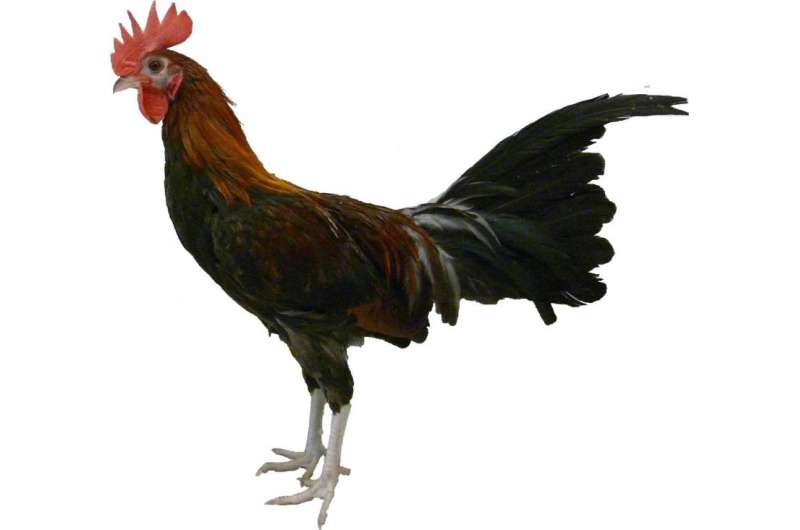The animal populations that humans selected to domesticate grew increasingly tame

A reduced fear of humans can be the driving force behind the characteristics that have developed since wild animals became domesticated, according to research by ethologists at Linköping University (LiU).
About 8,000 years ago we began to domesticate animals - a process that fundamentally changed the way animals and people live. Domesticated animals of today have characteristics that distinguish them from their wild ancestors, including size, colour, reproduction and behaviour.
In a fresh study the LiU researchers show that many of these changes can have been driven by a simple fact: the animal populations that humans selected to domesticate grew increasingly tame. The study is now published in Biology Letters.
The researchers used a population of red junglefowl (Gallus gallus), the wild ancestor of all domesticated fowl. For five generations they selected animals with a congenital reduced fear of humans, and bred their offspring. For comparison, they also bred a separate line from the fowl that were most fearful of humans.
"We used a standardised behaviour test where we studied the fowl's reaction to a human. This method resembled the conditions during the very first stage of fowl husbandry 8,000 years ago," says Beatrix Agnvall, doctoral student in ethology and first author of the article.
After just five generations, the increasingly tame fowl had developed a higher metabolism and feed conversion rate - they grew more although they ate less than the more fearful animals in the control group. They were also more cautious in situations where humans were not involved, and, as in previous studies of the same animals, they laid larger eggs. The levels of the hormone serotonin were higher in the tame roosters, and the researchers believe that this can be one of the mechanisms driving the results.
According to Per Jensen, professor of ethology at LiU and head of the study, increased tameness was an important prerequisite in the animals' ability to live with humans.
"The results show that it can automatically have led to many of the characteristics that we and our ancestors liked about domesticated animals. Therefore we can suppose that our ancestors didn't necessarily select animals because they were good at producing food, but mainly because they were easy to manage," says Prof Jensen, who believes the results could also apply to other domesticated animals like pigs, sheep and cattle.
More information: Is domestication driven by reduced fear of humans: Boldness, metabolism and serotonin levels in divergently selected Red Junglefowl (Gallus gallus), Biology Letters, rsbl.royalsocietypublishing.or … .1098/rsbl.2015.0509
Journal information: Biology Letters
Provided by Linköping University


















